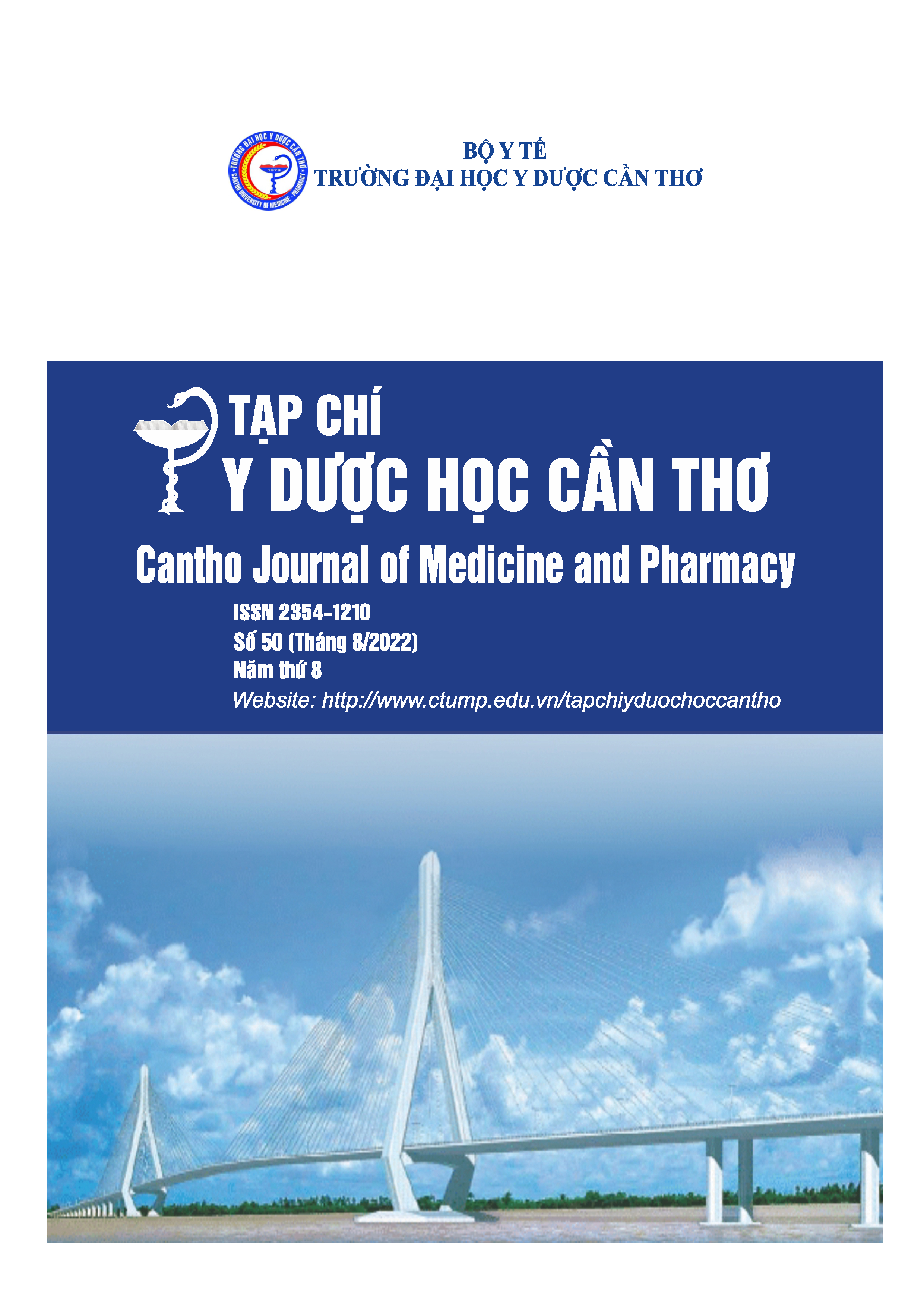BẠCH CẦU ÁI TOAN MÁU – DẤU ẤN SINH HỌC TIÊN LƯỢNG ĐỢT CẤP BỆNH PHỔI TẮC NGHẼN MẠN TÍNH
Nội dung chính của bài viết
Tóm tắt
Đặt vấn đề: Đợt cấp bệnh phổi tắc nghẽn mạn tính làm tăng tỷ lệ tử vong, suy giảm chức năng hô hấp, gia tăng chi phí điều trị và ảnh hưởng chất lượng cuộc sống. Bạch cầu ái toan trong máu ngoại vi là yếu tố có vai trò quan trọng trong tiên lượng đợt cấp bệnh phổi tắc nghẽn mạn tính. Mục tiêu nghiên cứu: Phân tích mối liên quan giữa số lượng bạch cầu ái toan trong máu và một số yếu tố khác trong tiên lượng đợt cấp bệnh phổi tắc nghẽn mạn tính. Đối tượng và phương pháp nghiên cứu: Nghiên cứu cắt ngang mô tả, tiến cứu trên 87 bệnh nhân bệnh phổi tắc nghẽn mạn tính giai đoạn ổn định. Kết quả: Tuổi trung bình trong nghiên cứu là 67,5 ± 9,49, nam chiếm 98,9%. Giá trị trung bình của số lượng bạch cầu ái toan trong máu là 386,49±376,82 tế bào/μL. Với các ngưỡng bạch cầu ái toan máu là 100 tế bào/μL và 300 tế bào/μL, không có sự khác biệt về số đợt cấp được ghi nhận. Với ngưỡng bạch cầu ái toan trong máu ≥300 tế bào/μL kèm với phân loại GOLD nhóm C/D có liên quan có ý nghĩa thống kê với sự xuất hiên đợt cấp trong 3 tháng theo dõi. Kết luận: Bạch cầu ái toan trong máu không phải là yếu tố nguy cơ độc lập tiên lượng đợt cấp bệnh phổi tắc nghẽn mạn tính. Bệnh nhân bệnh phổi tắc nghẽn mạn tính thuộc nhóm GOLD C/D kèm với ngưỡng bạch cầu ái toan trong máu ≥300 tế bào/μL liên quan có ý nghĩa đến sự xuất hiện đợt cấp bệnh phổi tắc nghẽn mạn tính trong tương lai.
Chi tiết bài viết
Từ khóa
Bạch cầu ái toan, COPD, đợt cấp
Tài liệu tham khảo
2. Benson VS, Hartl S (2022), “Blood eosinophil counts in the general population and airways disease: a comprehensive review and meta-analysis”, Eur Respir J, 59(1), 2004590.
3. Chan MC, Yeung YC (2020), “Blood Eosinophil and Risk of Exacerbation in Chronic Obstructive Pulmonary Disease Patients: A Retrospective Cohort Analysis”, Int J Chron Obstruct Pulmon Dis, 15, pp.2869-2877.
4. D'Souza AO, Shah M, Dhamane AD, Dalal AA (2014) “Clinical and economic burden of COPD in a medicaid population”, COPD, 11(2), 212-220.
5. GOLD (2021), Global Strategy for the Diagnosis, Management and Prevention of COPD. http://goldcopd.org.
6. Hartley BF, Barnes NC, Lettis S (2020), “Risk factors for exacerbations and pneumonia in patients with chronic obstructive pulmonary disease: a pooled analysis”, Respiratory Research,21, pp 5.
7. Hastie AT, Martinez FJ, Curtis JL, Doerschuk CM, et al. (2017), “Association of sputum and blood eosinophil concentrations with clinical measures of COPD severity: an analysis of the SPIROMICS cohort”, Lancet Respir Med, 5(12), pp.956-967.
8. Hurst JR, Vestbo J, Anzueto A, Locantore N, et al. (2010), “Susceptibility to exacerbation in chronic obstructive pulmonary disease”, N Engl J Med, 363(12), pp.1128-1138.
9. Miravitlles M, Soler-Cataluña JJ, Soriano BJ et al. (2022), “Determinants of blood eosinophil levels in the general population and patients with COPD: a population-based, epidemiological study”, Respiratory Research, 23(49), pp.1-10.
10. Singh D, Kolsum U, Brightling CE, Locantore N, et al. (2014), “Eosinophilic inflammation in COPD: prevalence and clinical characteristics”, Eur Respir J, 44(6), pp.1697-1700.
11. Vedel-Krogh S, Nielsen SF, Lange P, Vestbo J, et al. (2016) “Blood Eosinophils and Exacerbations in Chronic Obstructive Pulmonary Disease. The Copenhagen General Population Study”, Am J Respir Crit Care Med, 193(9), pp.965-974.
12. Watz H, Tetzlaff K, Wouters EF, Kirsten A, et al. (2016) “Blood eosinophil count and exacerbations in severe chronic obstructive pulmonary disease after withdrawal of inhaled corticosteroids: a post-hoc analysis of the WISDOM trial”, Lancet Respir Med, 4(5), pp.390-398.
13. WHO (2019), The top 10 causes of death. https://www.who.int/news-room/fact sheets/detail/thetop-10-causes-of-death.


